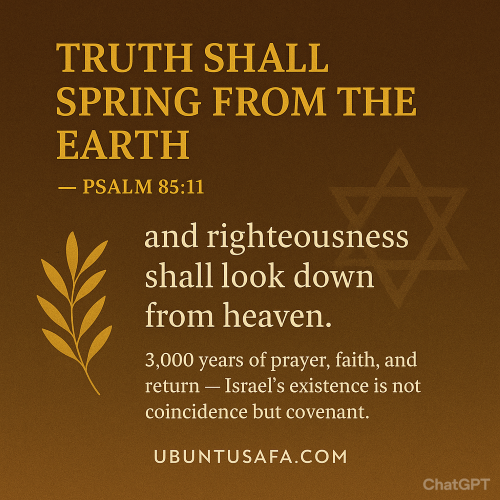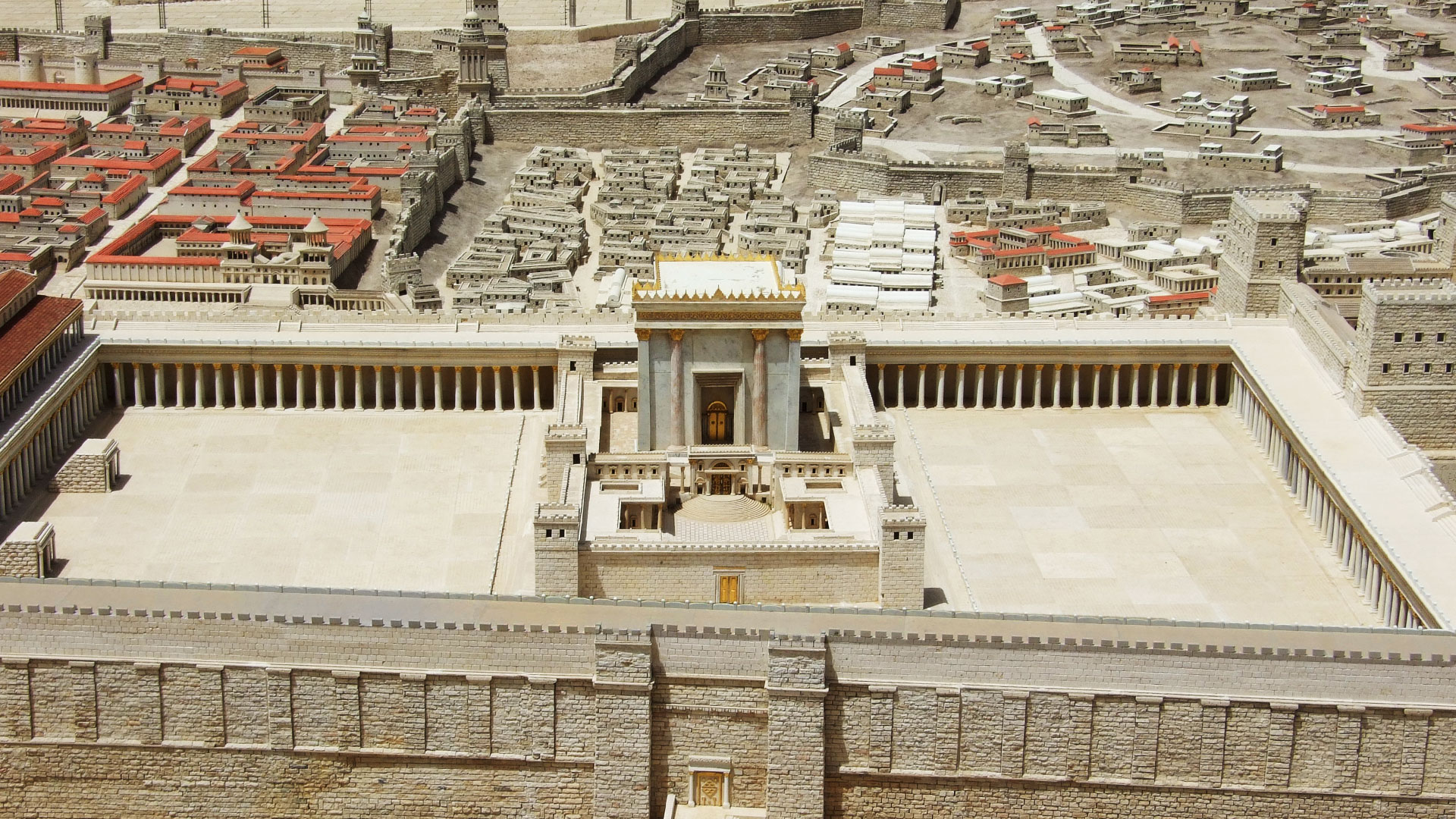How has historical revisionism attempted to erase Jewish history from Jerusalem and the Temple Mount?

How Historical Revisionism Has Attempted to Erase Jewish History from Jerusalem and the Temple Mount.
For more than three millennia, Jerusalem has stood at the heart of Jewish faith, identity, and nationhood. The Temple Mount—known in Hebrew as Har HaBayit—is the single most sacred site in Judaism. It is where King Solomon built the First Temple nearly 3,000 years ago, where the Second Temple stood for centuries, and where Jews have turned their prayers ever since their exile.
Yet in recent decades, an intense campaign of historical revisionism has emerged, seeking to deny, distort, or erase Jewish history from Jerusalem and the Temple Mount. This campaign is not merely academic—it has profound religious, political, and diplomatic consequences. It aims to delegitimize the Jewish connection to its holiest places, weaken the historical foundation of the modern State of Israel, and rewrite the very narrative of the Middle East.
This article examines how such revisionism developed, the strategies it employs, and why preserving historical truth is vital for both justice and genuine peace.
1. The Centrality of Jerusalem and the Temple Mount in Jewish History


Jerusalem is mentioned more than 600 times in the Hebrew Bible. King David established it as Israel’s capital around 1000 BCE. His son, King Solomon, built the First Temple (circa 957 BCE), making the city the spiritual center of the Jewish people.
The Babylonians destroyed the First Temple in 586 BCE, exiling many Jews to Babylon—but the yearning to return was never lost. Less than 70 years later, under Persian rule, Jews returned and rebuilt the Second Temple, which became a magnificent center of worship and national identity.
The Temple Mount remained the beating heart of Jewish life until its destruction by the Romans in 70 CE. Even after this calamity, Jews continued to pray toward Jerusalem, fast on the 9th of Av (Tisha B’Av) to mourn the Temple’s destruction, and make pilgrimages to the Western Wall.
This unbroken spiritual connection is documented in countless sources: biblical texts, rabbinic writings, Roman records, early Christian accounts, and Islamic texts themselves, which recognized the Jewish origins of the Temple Mount.
2. Early Islamic Recognition of Jewish History
When the Muslim Caliph Umar ibn al-Khattab conquered Jerusalem in 638 CE, historical sources record that he was guided by Jewish residents to the site of the ruined Temple. Early Islamic tradition recognized the Temple Mount as the place of Bayt al-Maqdis (House of the Holy), acknowledging its Jewish significance.
Islamic texts, including those by the medieval geographer al-Muqaddasi and early Quranic commentators, refer to the Jewish Temple. For centuries, Muslim rulers permitted Jews to visit and pray at their holy sites.
In other words, the earliest Muslim conquerors did not deny Jewish history in Jerusalem—they acknowledged and even respected it. The erasure campaign came much later, tied not to religion but to modern political conflicts.
3. The Rise of Modern Historical Revisionism
The systematic denial of Jewish history in Jerusalem began in the 20th century, particularly after the rise of modern Zionism and the establishment of the State of Israel in 1948.
As Jewish immigration increased and Jerusalem once again became a focal point of Jewish national life, some Arab and Muslim political movements responded not merely with opposition to Israeli policies but with denial of the Jewish past itself.
This trend accelerated dramatically after the 1967 Six-Day War, when Israel regained control over the Old City of Jerusalem, including the Temple Mount. This moment—symbolically and spiritually monumental for the Jewish people—triggered a strategic shift among anti-Israel actors: if they could not prevent Jewish return, they would attempt to delegitimize it by erasing the history that justified it.
4. Key Strategies of Historical Revisionism
a. Denying the Existence of the Jewish Temples
A central claim of modern revisionism is that the First and Second Jewish Temples never existed. Palestinian Authority officials, certain Arab governments, and affiliated scholars have repeatedly made this assertion in international forums.
For example:
-
PA leader Yasser Arafat famously denied the existence of the Jewish Temple during the 2000 Camp David Summit, claiming it was located in Nablus or Yemen.
-
The PA’s official media and textbooks often refer to the Temple Mount as solely “Al-Haram Al-Sharif” (the Noble Sanctuary), with no mention of Jewish history.
-
In 2016, UNESCO passed a resolution referring to the Temple Mount and Western Wall solely by their Islamic names, effectively ignoring Jewish ties.
b. Rebranding Jewish Holy Sites as Exclusively Islamic
Another strategy involves renaming and rebranding Jewish holy sites. The Temple Mount is referred to only as Al-Haram Al-Sharif; the Western Wall is sometimes called “Al-Buraq Wall,” tied to Islamic legend.
This language is politically charged. By stripping sites of their Hebrew names, revisionists attempt to sever the symbolic and emotional connection between Jews and their ancestral holy places.
c. Selective Archaeology and Destruction of Evidence
During the late 1990s, the Waqf (Islamic religious authority), without Israeli archaeological oversight, carried out massive excavations on the Temple Mount. Tons of dirt containing invaluable archaeological material were removed and dumped in Jerusalem’s Kidron Valley.
Israeli archaeologists and volunteers later sifted through this material, discovering:
-
Temple-period artifacts,
-
Ancient Hebrew inscriptions,
-
Fragments from Second Temple structures.
This episode is widely regarded by scholars as one of the largest deliberate destructions of archaeological evidence in Jerusalem’s history.
d. Propagating Narratives Through Education and Diplomacy
Many Palestinian Authority textbooks either erase or minimize Jewish history in Jerusalem. International forums like the UN Human Rights Council and UNESCO have repeatedly passed resolutions that adopt these revisionist narratives, giving them international legitimacy.
By institutionalizing historical denial, these bodies help shape global public opinion, often without scrutiny or historical context.
5. The Role of UNESCO and International Institutions
In October 2016, UNESCO passed a controversial resolution declaring the Temple Mount and Western Wall “Islamic holy sites,” failing to use the Jewish names Har HaBayit or Kotel. This resolution was pushed by Arab states and supported by several European countries.
This decision:
-
Ignored 3,000 years of Jewish history,
-
Contradicted vast archaeological evidence,
-
Politicized a historical and religious issue to delegitimize Israel’s sovereignty.
Although the resolution was non-binding, its symbolic effect was enormous: it signaled that international bodies can be used as instruments of historical erasure, providing diplomatic cover to revisionist narratives.
6. Archaeology as a Witness to Truth


Despite these attempts at denial, archaeology provides overwhelming evidence of ancient Jewish life and worship in Jerusalem. Among the findings:
-
Hezekiah’s Tunnel, an engineering marvel from the First Temple period.
-
The Pilgrimage Road, used by Jewish pilgrims ascending to the Temple.
-
Ancient coins bearing inscriptions like “For the Freedom of Zion.”
-
Stone weights, seals, and Hebrew inscriptions dating to the time of the First and Second Temples.
-
Remnants of Temple-period mikva’ot (ritual baths) near the southern and western walls.
These discoveries are not matters of belief—they are empirical, documented, and studied by archaeologists worldwide. Even early Islamic architecture, such as the Dome of the Rock, was built deliberately atop the ruins of the Jewish Temple, acknowledging its presence rather than erasing it.
7. Historical Revisionism as a Political Weapon
The denial of Jewish history is not primarily about theology—it is about undermining Jewish national legitimacy. If Jews have no historical claim to Jerusalem or the Temple Mount, then:
-
Israel can be portrayed as a “colonial occupier” rather than an indigenous nation returning home,
-
Jewish rights under international law (San Remo, League of Nations Mandate, UN Charter Article 80) can be politically ignored,
-
Arab rejectionism can be justified as “resistance” to foreign intrusion.
This weaponization of history turns facts into political battlegrounds and obstructs any possibility of genuine reconciliation.
8. The Irony: Islamic and Christian Texts Affirm Jewish History
Ironically, early Islamic sources and the New Testament both affirm Jewish Temple history:
-
The Quran references “the place of prostration” and “the Children of Israel” connected to the Holy Land.
-
Medieval Islamic scholars openly acknowledged the Jewish Temple’s existence before the construction of the Al-Aqsa Mosque and Dome of the Rock in the late 7th century.
-
The New Testament describes Jesus visiting the Second Temple in Jerusalem.
Modern denialism, therefore, is not rooted in Islamic theology or Christian tradition but in modern political agendas.
9. The Moral and Diplomatic Cost of Erasing History
When international institutions or media outlets adopt revisionist narratives, they:
-
Undermine historical truth and scholarship,
-
Legitimize extremism and antisemitism,
-
Politicize sacred spaces instead of promoting shared respect,
-
Obstruct pathways to peace based on mutual recognition.
True peace cannot be built upon denial. It must rest on truth, respect, and acknowledgment of each people’s historical connection to the land.
10. Preserving Historical Truth: A Shared Responsibility
To counter historical revisionism, it is crucial to:
-
Protect archaeological sites in Jerusalem, ensuring they are not destroyed or politicized.
-
Promote accurate historical education that acknowledges Jewish, Christian, and Muslim ties to the city.
-
Demand that international institutions adopt balanced language respecting historical facts.
-
Empower indigenous voices, including Jewish scholars and communities, to tell their own history.
-
Encourage interfaith recognition that does not deny one group’s sacred heritage in order to elevate another’s.
This is not merely a Jewish issue—it is a global ethical issue about how the world honors or distorts the record of human civilization.
Truth as the Foundation of Peace
The campaign to erase Jewish history from Jerusalem and the Temple Mount is one of the most consequential acts of historical revisionism in modern times. It seeks to rewrite millennia of memory in order to delegitimize a people’s right to their ancestral home.
But the stones of Jerusalem speak. The artifacts unearthed from its soil, the prayers whispered at the Western Wall, the scriptures of three faiths—all testify to the Jewish people’s ancient, continuous, and sacred bond with this city.
Peace built on lies will collapse. But peace built on truth and mutual respect can endure. Recognizing and preserving the Jewish history of Jerusalem is not an obstacle to peace; it is the necessary foundation for it.
- Questions and Answers
- Opinion
- Motivational and Inspiring Story
- Technology
- Live and Let live
- Focus
- Geopolitics
- Military-Arms/Equipment
- Security
- Economy
- Beasts of Nations
- Machine Tools-The “Mother Industry”
- Art
- Causes
- Crafts
- Dance
- Drinks
- Film/Movie
- Fitness
- Food
- Games
- Gardening
- Health
- Home
- Literature
- Music
- Networking
- Other
- Party
- Religion
- Shopping
- Sports
- Theater
- Health and Wellness
- News
- Culture

